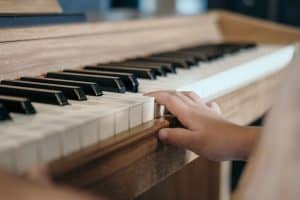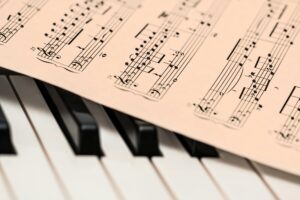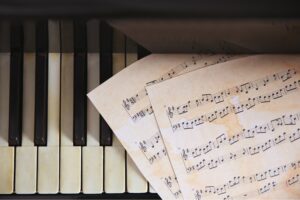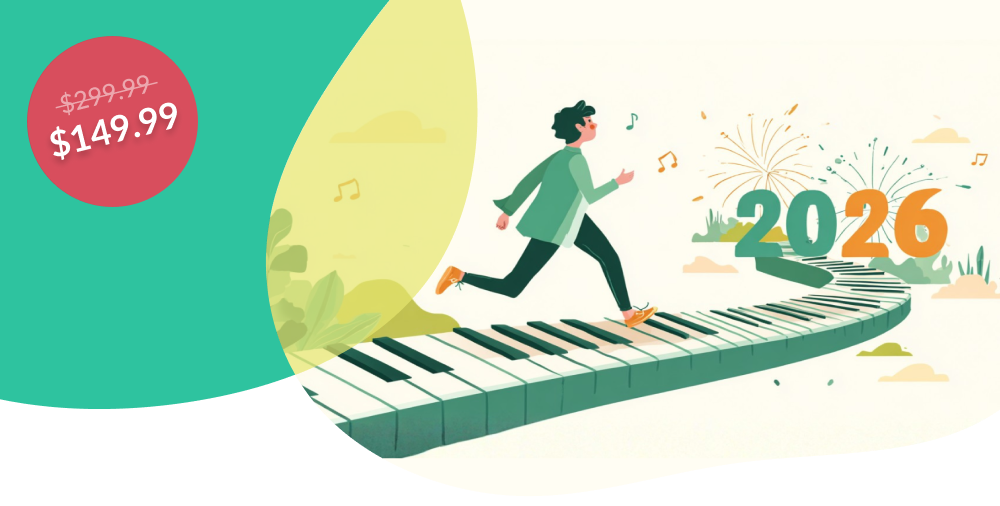Do you know how to identify the value of the notated silences known as ‘rests’ when reading sheet music? While listening to a song, it’s common to overlook the pauses and silences, as your ear naturally gravitates towards active elements like lyrics, catchy melodies, or rhythms.
Rests contribute significantly to music’s structure and expression. Understanding and recognising rests is essential when reading music. In this article we will examine how rests in music are represented through notation and understood through music theory.

What are rests in music?
In music theory, we use rests to indicate silence. These rests are crucial for understandingpiano playing, instructing the musician to remain silent for a specific number of beats or bars.
Rest, much like notated pitch durations, vary in length. Exploring each different rest symbol and duration helps when comprehending their functions and importance in written music. This knowledge is essential for recognizing and interpreting these symbols quickly when playing, enhancing one’s ability to read and perform music effectively.
Learn how to play ‘Our House’ on piano. Start a 7 day trial today – no card details required!
Different types of musical rests & their symbols
Every piece of music needs moments of silence! Here’s a handy chart showing the different types of musical rests, their symbols, and how long each rest lasts.
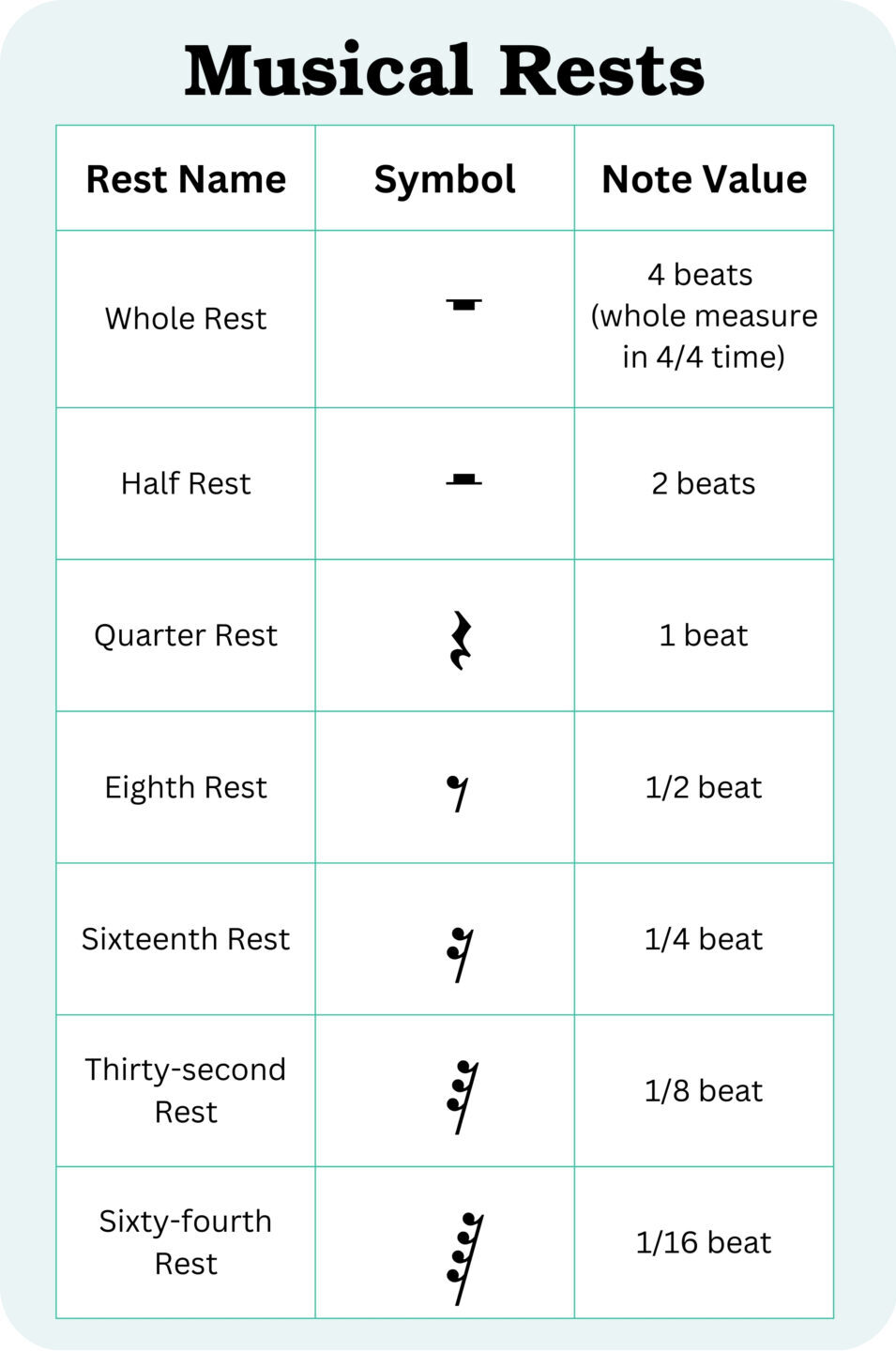
Let’s break down all the different rest types and how to use them:
Whole note rest or semibreve rest
The whole rest or semibreve rest looks like this:
 The whole note rest is shown by use of a rectangular musical symbol. This rest dangles from the fourth line of the staff. It looks similar to the half-rest symbol so make sure you don’t get them confused! Whole rests are equivalent to whole notes in duration. In a4/4 time signature, like the whole note, the whole rest spans four beats.
The whole note rest is shown by use of a rectangular musical symbol. This rest dangles from the fourth line of the staff. It looks similar to the half-rest symbol so make sure you don’t get them confused! Whole rests are equivalent to whole notes in duration. In a4/4 time signature, like the whole note, the whole rest spans four beats.
Half note rest or minim rest
A half rest or minim rest looks like this:

This rest has the same duration of two whole beats.
Notice how it takes up the same duration of time as its pitch notation counterpart:

Quarter note rest or crotchet rest
A quarter rest or crotchet rest looks like this:

The quarter note rests, or crotchet rests, are equivalent in duration to quarter notes. This rest notates a rest for a whole beat.
Let’s have a look at it in the context of a bar of 4/4:

Smaller lengths of time in notation
Now that we’ve grasped the notation for the longer rests in music we can now examine the eighth and the sixteenth note rests. These symbols are crucial in sheet music for indicating shorter pauses.
Eighth note rest
An eighth rest looks like this:
 An eighth rest lasts for half a beat. Therefore, two eighth rests equal one quarter note, just the same as two eighth notes.
An eighth rest lasts for half a beat. Therefore, two eighth rests equal one quarter note, just the same as two eighth notes.
How to count this?
For example, we also count the eighth rest in the same way we count the eighth note:
1 + 2 + 3 + 4 +
(one and two and three and four and)
Here is an example of somebasic piano chords with a couple of eighth rests thrown in:

Sixteenth note rest or semiquaver rest
A sixteenth rest or semiquaver rest looks like this:
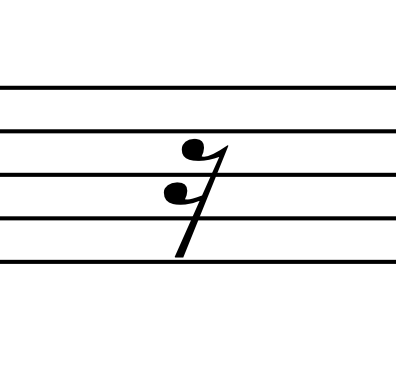
A sixteenth rest features two flags, just like the sixteenth note features two flags or beams. Similar to the sixteenth note, this rest symbol lasts for one quarter of a beat.
How to count this?
For example, we count this musical rest in the same value as well:
1 e + a 2 e + a 3 e + a 4 e + a
(one e and uh two e and uh three e and uh four e and uh)
Here is an example of some major and minor chords with a few sixteenth rests thrown

Ties and connecting rests
There is one major difference in the way rests and notes are notated. While notes can be lengthened by connecting them with a ‘tie’, rests cannot. This helps keep rests grouped evenly, we will come back to that subject later.
When rests are continued for multiple bars to save space and make it easier for musicians to keep track of bars, multi-measure rests are used:
Dotted rests?
It might seem that we would use dotted rest notes in the same way we use dotted notes. However, this is often not the case. You will regularly come across dotted quarter and sixteenth note rests. You will only rarely see dotted half note rests in simple time, like you see a dotted half note. You can learn about this and much more withonline piano lessons from Skoove.
Let’s have a look at how they could be used:
 Grouping
Grouping
In music, grouping organizes beats within measures, reflecting the time signature’s natural accents, while rests signify silence. Together, they shape rhythm and phrasing, ensuring clarity and expression. Proper grouping of notes and rests simplifies sight reading and performing. This structure is essential for coherent and expressive music.
This: Not this:

Rests with fermata
The fermata symbol looks like this:

The fermata symbol extends the value of the corresponding note or rest. It is generally up to the performer how long to play the fermata. The fermata is frequently seen at the end of a musical piece or between its sections, enhancing the expressive quality conveyed through sheet music.
Conclusion
Mastering rest symbols is as vital as how to remember piano notes, as they bring balance, structure, and expression to music. Precision in observing rests ensures the intended pauses and silences are conveyed well, enhancing the overall impact of a piece. Whether marking brief pauses or multi-measure silences, these symbols are crucial for interpreting music accurately. Incorporating tools like Skoove’s interactive lessons can help you develop this essential skill effectively.











